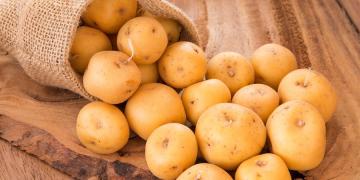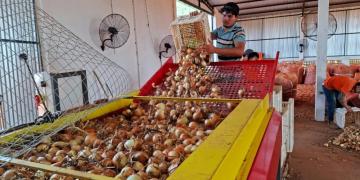Argentina: "During 2025, the potato producer worked at a loss."
Alfredo Pereyra, president of the Argentine Federation of Potato Producers, explained the difficult situation facing the sector, with low prices and high costs.

Potato production in Argentina is going through difficult times . In an interview with Elonce Radio & Streaming 98.7 ’s Movendo el Avispero , Alfredo Pereyra , president of the Argentine Federation of Potato Producers, explained the complicated situation facing the country’s producers. According to Pereyra, although this year’s harvest was abundant, prices have fallen to such low levels that producers are working at a loss. " Producers are going through a difficult time with prices. We’ve had a very good potato harvest, but prices are very low, which means we’re working at a loss ," he stated.
The situation worsens when comparing the prices consumers pay at grocery stores with what producers receive. Currently, an 18-kilogram bag of potatoes costs between 1,800 and 2,000 pesos in the field, while at the market it can cost up to 4,000 pesos. Despite the high supply, harvesting costs are almost equivalent to what is received, leaving little to no profit. "It ’s really difficult to carry the cost, because between what is paid as the final expense and what is actually received, we are recovering perhaps 5% of the investment ," explained the president of the Federation.
A sector with high costs and low returns
The financial outlook is even bleaker when considering the cost of land and inputs. “ A hectare of potatoes costs between $8,000 and $10,000 per hectare. We’re recovering practically nothing; this year has been a total loss ,” Pereyra said. For producers, it’s not just the low prices that matter, but also the high costs of planting and harvesting. Despite the difficulties, production in the country remains stable, with around 80,000 hectares planted, distributed across various provinces.
The southeastern region of the province of Buenos Aires is the main producer, concentrating approximately 45,000 hectares. “ The most important harvesting area is the southeast, not only because of the number of hectares, but also because of the yield, which reaches up to 45 tons per hectare ,” he explained. However, other areas, such as the Northwest and the center of the country, have lower yields. This imbalance in production contributes to price instability.
Exports, domestic market and the uncertain future
Another relevant issue is potato exports, which currently face significant barriers. Although fresh potatoes are not widely sold abroad due to restrictions, frozen pre-fried potatoes are in greater demand. "Of the 25-30% consumed by the industry, around 55-56% is exported," Pereyra indicated. However, the international market situation is also complicated, with countries like Europe and China offering more competitive prices than Argentina.
The future of potato prices for next year is uncertain due to the large global supply and logistical difficulties. According to the Federation’s president, "the world is full of potatoes, especially Europe, which has had an excellent harvest, which has caused prices to fall even further ." This has primarily affected exports to Brazil, which has reduced its purchases by 50%, as European potatoes are cheaper and transportation costs are lower.
The impact of economic difficulties on producers
Regarding government support, Alfredo Pereyra mentioned that interest rates on loans are very high, further complicating the situation for producers. "Taking out a loan would be suicidal, with rates so high," he said. Despite this, producers continue to struggle to maintain their activities, especially demanding improvements in road infrastructure, such as road repairs.
When asked about the characteristics of potatoes produced in Argentina, Pereyra clarified that there are two main types: white potatoes and black potatoes. According to him, "it depends on the area where they are produced; potatoes from sandier areas are whiter, while those from the southeast tend to be blacker." However, he emphasized that both are of the same variety and that the difference in color does not affect their quality.
The potato situation in Argentina is complex, but Alfredo Pereyra concluded with a realistic view: " This year has been a total loss, but we hope that next year, with a better harvest and more stable prices, the situation will improve ." Meanwhile, producers continue to struggle to maintain their crops and offer a quality product to consumers.
Fuente: Traducido por Argenpapa de: elonce.com




